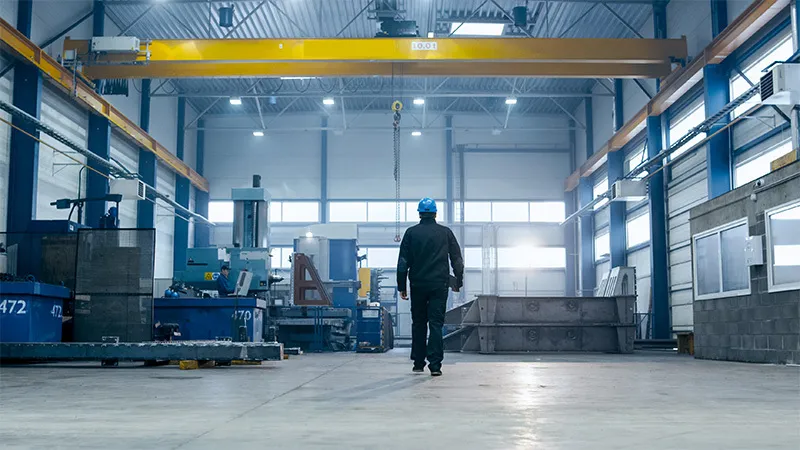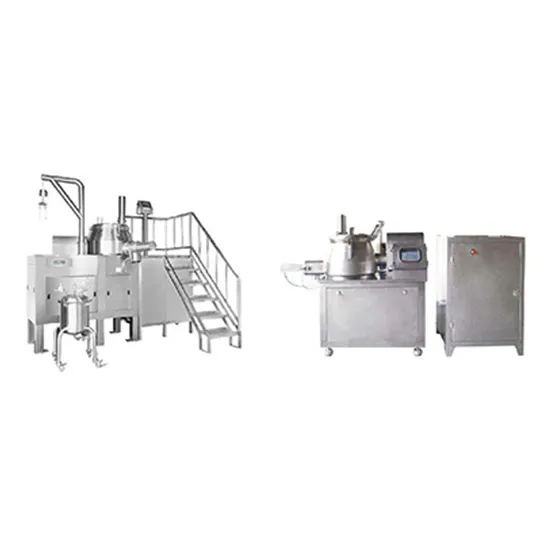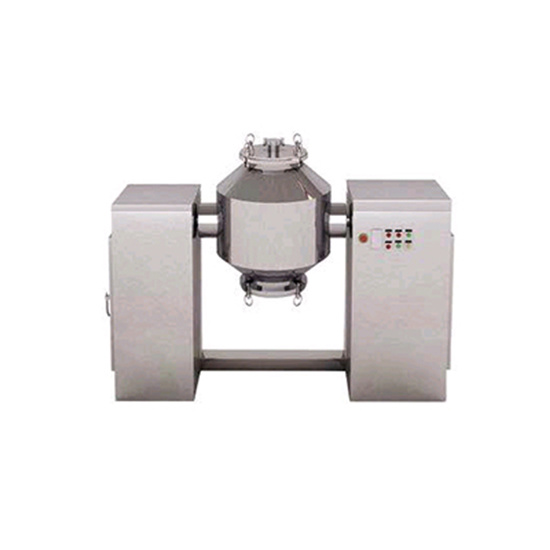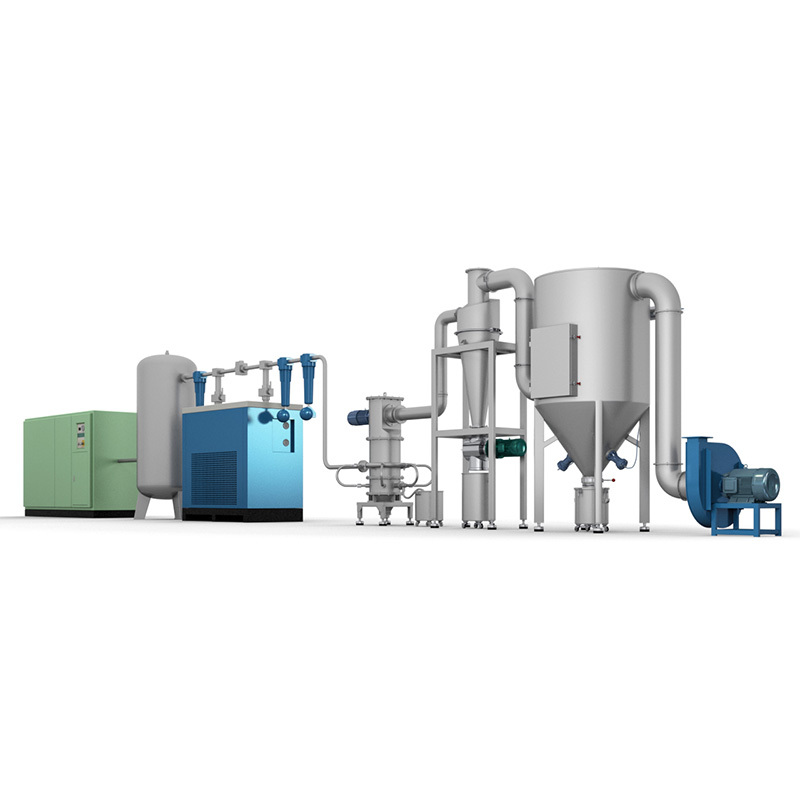NEWS
The Ultimate Guide to Crushing Equipment for Manufacturing and Processing Machinery
Sep 22,2023
Table of Contents:
1. Introduction
2. Types of Crushing Equipment
2.1 Jaw Crushers
2.2 Cone Crushers
2.3 Impact Crushers
2.4 Hammer Mills
2.5 Gyratory Crushers
3. Applications of Crushing Equipment
3.1 Mining and Quarrying
3.2 Recycling and Waste Management
3.3 Construction and Demolition
3.4 Manufacturing and Processing
4. Benefits of Using Crushing Equipment
4.1 Efficiency and Productivity
4.2 Cost Savings
4.3 Reduced Environmental Impact
5. Proper Maintenance of Crushing Equipment
5.1 Regular Inspections and Cleaning
5.2 Lubrication and Fluid Analysis
5.3 Replacement of Wear Parts
5.4 Training and Education for Operators
6. Choosing the Right Crushing Equipment
6.1 Considerations for Material Properties
6.2 Capacity and Throughput Requirements
6.3 Size Reduction Ratio
6.4 Power and Energy Efficiency
7. Frequently Asked Questions (FAQs)
7.1 What is the lifespan of crushing equipment?
7.2 Can crushing equipment handle different types of materials?
7.3 How often should I inspect my crushing equipment?
7.4 Are there any safety measures associated with crushing equipment?
7.5 What are the key factors to consider when selecting a crushing equipment supplier?
8. Conclusion
1. Introduction
Welcome to the ultimate guide to crushing equipment for manufacturing and processing machinery. In this comprehensive article, we will delve into the world of crushing equipment, exploring its different types, applications, benefits, maintenance practices, and how to choose the right equipment for your specific needs.
2. Types of Crushing Equipment
When it comes to crushing equipment, there are several options available, each designed for different purposes and materials. Let's explore some of the most common types:
2.1 Jaw Crushers
Jaw crushers are versatile machines used for primary crushing of various materials. They feature a fixed plate and a movable plate that forces the material against the fixed plate, crushing it into smaller pieces. Jaw crushers are ideal for materials with high hardness and abrasive properties.
2.2 Cone Crushers
Cone crushers are popular in secondary and tertiary crushing applications. They utilize a rotating cone-shaped mantle that gyrates around the fixed bowl liner, compressing the material against the mantle. Cone crushers are suitable for crushing medium-hard to hard and abrasive materials.
2.3 Impact Crushers
Impact crushers are designed to crush materials through impact and high-speed rotation of the rotor. They can be used for primary, secondary, or tertiary crushing of various materials. Impact crushers are commonly used in mining, quarrying, and recycling applications.
2.4 Hammer Mills
Hammer mills consist of a series of hammers mounted on a rotating shaft within a cylindrical chamber. As the material enters the chamber, it is struck by the rotating hammers, pulverizing it into smaller particles. Hammer mills are widely used in the manufacturing and processing industry.
2.5 Gyratory Crushers
Gyratory crushers are primarily used for primary crushing in large-scale mining and quarrying operations. They feature a conical head that gyrates within a larger crushing chamber, squeezing the material against the concave surface. Gyratory crushers are known for their high capacity and efficiency.
3. Applications of Crushing Equipment
Crushing equipment finds its application in various industries. Let's explore some of the key sectors where crushing equipment plays a crucial role:
3.1 Mining and Quarrying
In the mining and quarrying industry, crushing equipment is essential for extracting valuable minerals and materials from the earth. It is used to reduce the size of large rocks and ores, making them suitable for further processing and extraction.
3.2 Recycling and Waste Management
Crushing equipment is vital in recycling and waste management operations. It helps in reducing the volume of waste materials, making them easier to transport and process. Crushing equipment can handle various recyclable materials, including concrete, asphalt, and demolition waste.
3.3 Construction and Demolition
The construction and demolition industry heavily relies on crushing equipment to process and reduce construction debris. It allows for the reuse of materials, such as concrete and asphalt, on new construction projects, minimizing waste and environmental impact.
3.4 Manufacturing and Processing
Crushing equipment is also used in manufacturing and processing operations, where it helps in breaking down materials into smaller, more manageable sizes. This improves efficiency and ensures consistent product quality across various industries.
4. Benefits of Using Crushing Equipment
Using crushing equipment in your manufacturing and processing operations offers several benefits, including:
4.1 Efficiency and Productivity
Crushing equipment enables efficient and productive material processing, reducing the time and resources required for manual processing. It helps to increase throughput and ensure consistent product quality.
4.2 Cost Savings
By reducing the need for manual labor and optimizing material processing, crushing equipment can lead to significant cost savings. It minimizes operational expenses and improves overall profitability.
4.3 Reduced Environmental Impact
Crushing equipment plays a vital role in sustainable manufacturing and processing practices. By reducing waste and enabling material reuse, it contributes to a greener and more environmentally friendly operation.
5. Proper Maintenance of Crushing Equipment
To ensure optimal performance and prolong the lifespan of your crushing equipment, proper maintenance is essential. Here are some key maintenance practices to follow:
5.1 Regular Inspections and Cleaning
Regular inspections allow you to identify any potential issues before they escalate. Cleaning the equipment regularly removes dirt and debris, preventing clogs and ensuring smooth operation.
5.2 Lubrication and Fluid Analysis
Proper lubrication of moving parts is crucial for the smooth functioning of crushing equipment. Regular fluid analysis helps identify any signs of wear or contamination, allowing for timely maintenance.
5.3 Replacement of Wear Parts
Wear parts, such as crusher liners and jaws, should be regularly inspected and replaced when necessary. This ensures optimal performance and prevents unexpected breakdowns.
5.4 Training and Education for Operators
Properly trained operators can maximize the efficiency and lifespan of crushing equipment. Regular training and education programs help operators understand best practices and safety guidelines.
6. Choosing the Right Crushing Equipment
Selecting the right crushing equipment for your specific needs requires careful consideration. Here are some factors to keep in mind:
6.1 Considerations for Material Properties
Different materials have varying hardness, abrasiveness, and moisture content. Understanding the properties of the material you intend to crush is crucial in selecting the appropriate equipment.
6.2 Capacity and Throughput Requirements
Evaluate your production needs and determine the required capacity and throughput of the crushing equipment. This ensures that the equipment can handle the desired volume efficiently.
6.3 Size Reduction Ratio
The size reduction ratio represents the ratio of the feed size to the product size after crushing. Consider the desired final product size and select equipment that can achieve the desired reduction ratio.
6.4 Power and Energy Efficiency
Efficient use of power and energy is essential for optimizing operational costs. Consider the power requirements and energy efficiency of the crushing equipment you intend to purchase.
7. Frequently Asked Questions (FAQs)
Got questions about crushing equipment for manufacturing and processing machinery? Check out these FAQs for quick answers:
7.1 What is the lifespan of crushing equipment?
The lifespan of crushing equipment depends on various factors, including the material being crushed, the frequency of use, and proper maintenance. With regular maintenance and timely replacement of wear parts, crushing equipment can last for several years.
7.2 Can crushing equipment handle different types of materials?
Yes, crushing equipment is designed to handle a wide range of materials, including minerals, rocks, construction debris, and recyclable materials. However, it is essential to consider the specific properties of the material and choose the appropriate equipment accordingly.
7.3 How often should I inspect my crushing equipment?
Regular inspections should be conducted based on the manufacturer's recommendations and your specific operational requirements. Typically, a monthly inspection is recommended, with more frequent inspections during heavy usage periods.
7.4 Are there any safety measures associated with crushing equipment?
Yes, safety is paramount when using crushing equipment. Proper training of operators, adherence to safety guidelines, and the use of protective equipment are crucial to ensure a safe working environment.
7.5 What are the key factors to consider when selecting a crushing equipment supplier?
When selecting a crushing equipment supplier, consider factors such as their reputation, experience in the industry, quality of equipment, customer reviews, and after-sales support. A reliable supplier will provide guidance and assistance throughout the equipment selection and purchasing process.
8. Conclusion
In conclusion, crushing equipment plays a vital role in manufacturing and processing machinery. By understanding the different types of crushing equipment, their applications, benefits, and maintenance practices, you can optimize your operations and achieve higher productivity, cost savings, and environmental sustainability. Remember to choose the right equipment for your specific needs and follow proper maintenance practices to ensure the longevity and optimal performance of your crushing equipment.
1. Introduction
2. Types of Crushing Equipment
2.1 Jaw Crushers
2.2 Cone Crushers
2.3 Impact Crushers
2.4 Hammer Mills
2.5 Gyratory Crushers
3. Applications of Crushing Equipment
3.1 Mining and Quarrying
3.2 Recycling and Waste Management
3.3 Construction and Demolition
3.4 Manufacturing and Processing
4. Benefits of Using Crushing Equipment
4.1 Efficiency and Productivity
4.2 Cost Savings
4.3 Reduced Environmental Impact
5. Proper Maintenance of Crushing Equipment
5.1 Regular Inspections and Cleaning
5.2 Lubrication and Fluid Analysis
5.3 Replacement of Wear Parts
5.4 Training and Education for Operators
6. Choosing the Right Crushing Equipment
6.1 Considerations for Material Properties
6.2 Capacity and Throughput Requirements
6.3 Size Reduction Ratio
6.4 Power and Energy Efficiency
7. Frequently Asked Questions (FAQs)
7.1 What is the lifespan of crushing equipment?
7.2 Can crushing equipment handle different types of materials?
7.3 How often should I inspect my crushing equipment?
7.4 Are there any safety measures associated with crushing equipment?
7.5 What are the key factors to consider when selecting a crushing equipment supplier?
8. Conclusion
1. Introduction
Welcome to the ultimate guide to crushing equipment for manufacturing and processing machinery. In this comprehensive article, we will delve into the world of crushing equipment, exploring its different types, applications, benefits, maintenance practices, and how to choose the right equipment for your specific needs.
2. Types of Crushing Equipment
When it comes to crushing equipment, there are several options available, each designed for different purposes and materials. Let's explore some of the most common types:
2.1 Jaw Crushers
Jaw crushers are versatile machines used for primary crushing of various materials. They feature a fixed plate and a movable plate that forces the material against the fixed plate, crushing it into smaller pieces. Jaw crushers are ideal for materials with high hardness and abrasive properties.
2.2 Cone Crushers
Cone crushers are popular in secondary and tertiary crushing applications. They utilize a rotating cone-shaped mantle that gyrates around the fixed bowl liner, compressing the material against the mantle. Cone crushers are suitable for crushing medium-hard to hard and abrasive materials.
2.3 Impact Crushers
Impact crushers are designed to crush materials through impact and high-speed rotation of the rotor. They can be used for primary, secondary, or tertiary crushing of various materials. Impact crushers are commonly used in mining, quarrying, and recycling applications.
2.4 Hammer Mills
Hammer mills consist of a series of hammers mounted on a rotating shaft within a cylindrical chamber. As the material enters the chamber, it is struck by the rotating hammers, pulverizing it into smaller particles. Hammer mills are widely used in the manufacturing and processing industry.
2.5 Gyratory Crushers
Gyratory crushers are primarily used for primary crushing in large-scale mining and quarrying operations. They feature a conical head that gyrates within a larger crushing chamber, squeezing the material against the concave surface. Gyratory crushers are known for their high capacity and efficiency.
3. Applications of Crushing Equipment
Crushing equipment finds its application in various industries. Let's explore some of the key sectors where crushing equipment plays a crucial role:
3.1 Mining and Quarrying
In the mining and quarrying industry, crushing equipment is essential for extracting valuable minerals and materials from the earth. It is used to reduce the size of large rocks and ores, making them suitable for further processing and extraction.
3.2 Recycling and Waste Management
Crushing equipment is vital in recycling and waste management operations. It helps in reducing the volume of waste materials, making them easier to transport and process. Crushing equipment can handle various recyclable materials, including concrete, asphalt, and demolition waste.
3.3 Construction and Demolition
The construction and demolition industry heavily relies on crushing equipment to process and reduce construction debris. It allows for the reuse of materials, such as concrete and asphalt, on new construction projects, minimizing waste and environmental impact.
3.4 Manufacturing and Processing
Crushing equipment is also used in manufacturing and processing operations, where it helps in breaking down materials into smaller, more manageable sizes. This improves efficiency and ensures consistent product quality across various industries.
4. Benefits of Using Crushing Equipment
Using crushing equipment in your manufacturing and processing operations offers several benefits, including:
4.1 Efficiency and Productivity
Crushing equipment enables efficient and productive material processing, reducing the time and resources required for manual processing. It helps to increase throughput and ensure consistent product quality.
4.2 Cost Savings
By reducing the need for manual labor and optimizing material processing, crushing equipment can lead to significant cost savings. It minimizes operational expenses and improves overall profitability.
4.3 Reduced Environmental Impact
Crushing equipment plays a vital role in sustainable manufacturing and processing practices. By reducing waste and enabling material reuse, it contributes to a greener and more environmentally friendly operation.
5. Proper Maintenance of Crushing Equipment
To ensure optimal performance and prolong the lifespan of your crushing equipment, proper maintenance is essential. Here are some key maintenance practices to follow:
5.1 Regular Inspections and Cleaning
Regular inspections allow you to identify any potential issues before they escalate. Cleaning the equipment regularly removes dirt and debris, preventing clogs and ensuring smooth operation.
5.2 Lubrication and Fluid Analysis
Proper lubrication of moving parts is crucial for the smooth functioning of crushing equipment. Regular fluid analysis helps identify any signs of wear or contamination, allowing for timely maintenance.
5.3 Replacement of Wear Parts
Wear parts, such as crusher liners and jaws, should be regularly inspected and replaced when necessary. This ensures optimal performance and prevents unexpected breakdowns.
5.4 Training and Education for Operators
Properly trained operators can maximize the efficiency and lifespan of crushing equipment. Regular training and education programs help operators understand best practices and safety guidelines.
6. Choosing the Right Crushing Equipment
Selecting the right crushing equipment for your specific needs requires careful consideration. Here are some factors to keep in mind:
6.1 Considerations for Material Properties
Different materials have varying hardness, abrasiveness, and moisture content. Understanding the properties of the material you intend to crush is crucial in selecting the appropriate equipment.
6.2 Capacity and Throughput Requirements
Evaluate your production needs and determine the required capacity and throughput of the crushing equipment. This ensures that the equipment can handle the desired volume efficiently.
6.3 Size Reduction Ratio
The size reduction ratio represents the ratio of the feed size to the product size after crushing. Consider the desired final product size and select equipment that can achieve the desired reduction ratio.
6.4 Power and Energy Efficiency
Efficient use of power and energy is essential for optimizing operational costs. Consider the power requirements and energy efficiency of the crushing equipment you intend to purchase.
7. Frequently Asked Questions (FAQs)
Got questions about crushing equipment for manufacturing and processing machinery? Check out these FAQs for quick answers:
7.1 What is the lifespan of crushing equipment?
The lifespan of crushing equipment depends on various factors, including the material being crushed, the frequency of use, and proper maintenance. With regular maintenance and timely replacement of wear parts, crushing equipment can last for several years.
7.2 Can crushing equipment handle different types of materials?
Yes, crushing equipment is designed to handle a wide range of materials, including minerals, rocks, construction debris, and recyclable materials. However, it is essential to consider the specific properties of the material and choose the appropriate equipment accordingly.
7.3 How often should I inspect my crushing equipment?
Regular inspections should be conducted based on the manufacturer's recommendations and your specific operational requirements. Typically, a monthly inspection is recommended, with more frequent inspections during heavy usage periods.
7.4 Are there any safety measures associated with crushing equipment?
Yes, safety is paramount when using crushing equipment. Proper training of operators, adherence to safety guidelines, and the use of protective equipment are crucial to ensure a safe working environment.
7.5 What are the key factors to consider when selecting a crushing equipment supplier?
When selecting a crushing equipment supplier, consider factors such as their reputation, experience in the industry, quality of equipment, customer reviews, and after-sales support. A reliable supplier will provide guidance and assistance throughout the equipment selection and purchasing process.
8. Conclusion
In conclusion, crushing equipment plays a vital role in manufacturing and processing machinery. By understanding the different types of crushing equipment, their applications, benefits, and maintenance practices, you can optimize your operations and achieve higher productivity, cost savings, and environmental sustainability. Remember to choose the right equipment for your specific needs and follow proper maintenance practices to ensure the longevity and optimal performance of your crushing equipment.
More News










